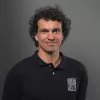Thank Tom,
It is important other designer and brand do confirm what Luc state. We need some more.
No more race on the fastest trimming and higher all-up-weight.
In mandatory addition, score the task differently without the massive reward on maximum speed during final glide with excess altitude.
Hello Luc
I read about a lot of changeing the task and waypoint changes with imo wild ideas and ideas on how to make scoring even less understandeable for pilots.
But, I guess the CESS
- is understandeable for pilots
- our GPSs are accurate enough to measure
- the GPS can make the needed calculations (cones and circles are easier to calculate)
- the pilots has direct feedback crossing the line
With some other ideas, the pilots see only after scoring how much bonus, penalty they have, etc. More of this, i guess makes the sport less attractive to pilots.
Is FTV questionned for PG comps? (initially developed for League Cups) in HG, only a few pilots think about that.






Comments
As a fellow designer, I can only say that so far the evidence (experimental and theoretical) that I observed on my end converges with Luc's presentation, which I think is brilliant. The CESS seems to solve the challenge of opening up the CCC to higher collapse resistance without going back to open class madness at top speed. We also double checked the calculations with my team and we end up with the same results.
Tom